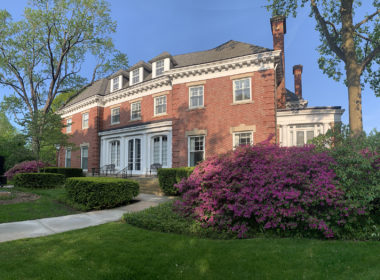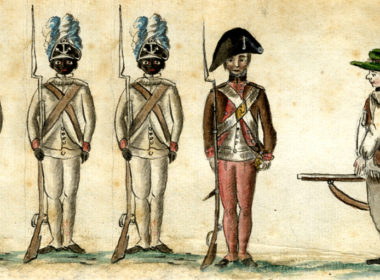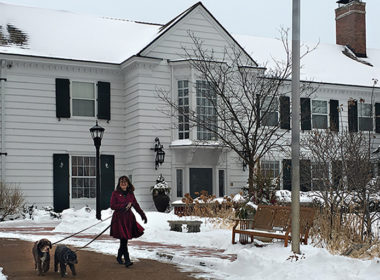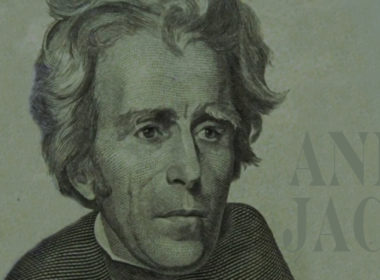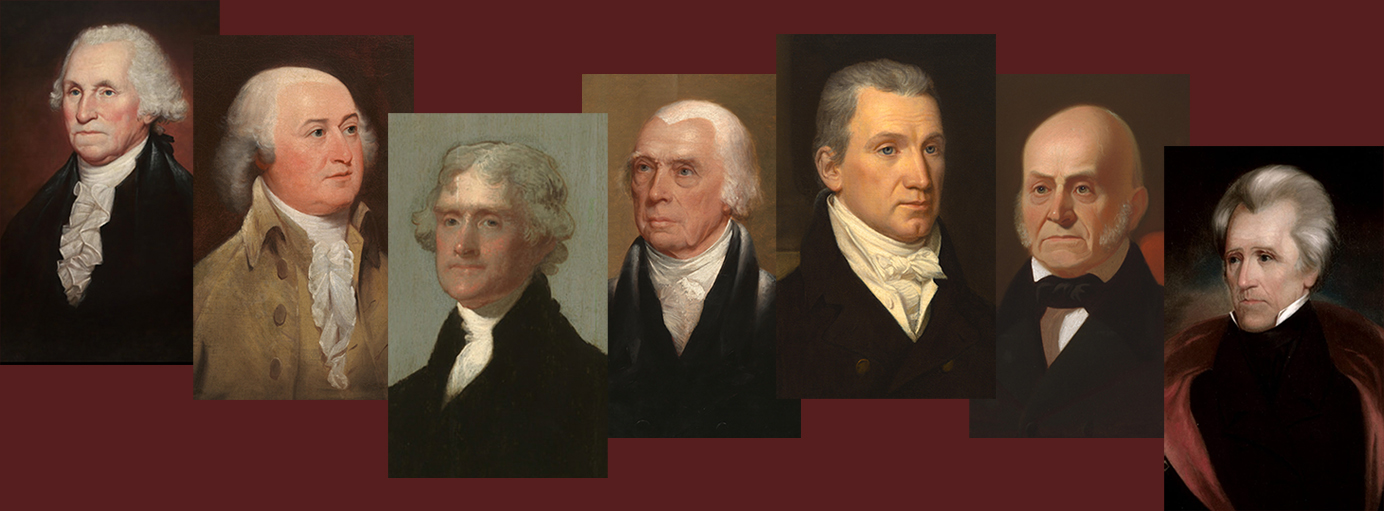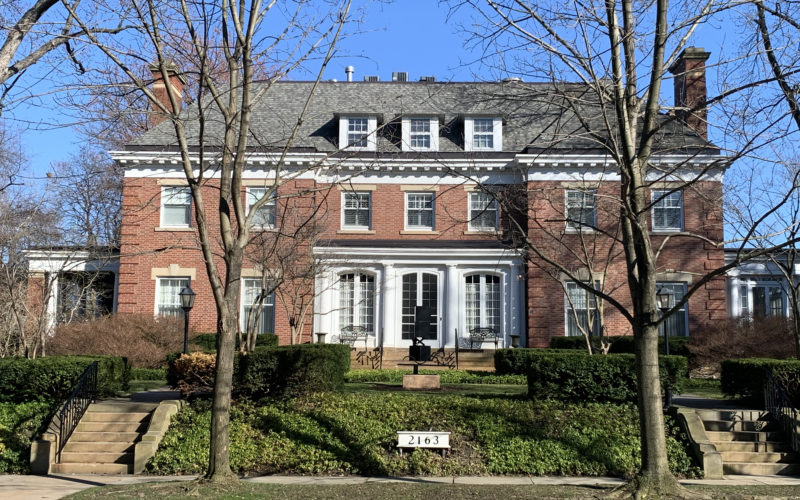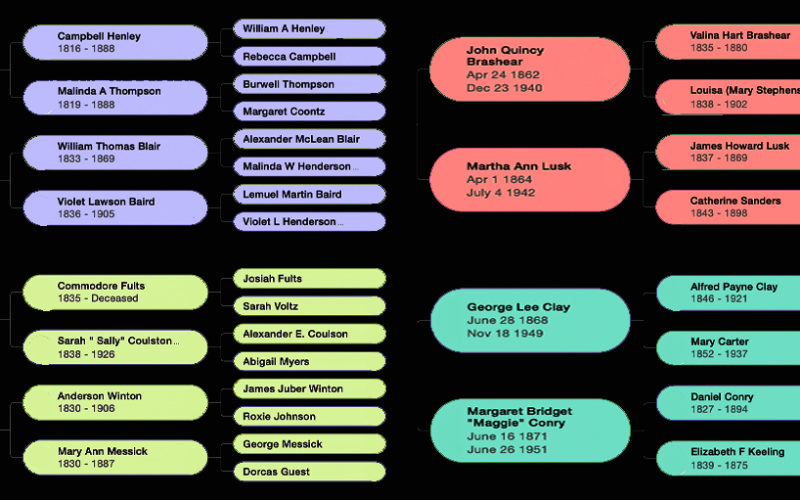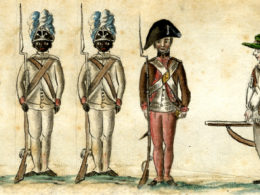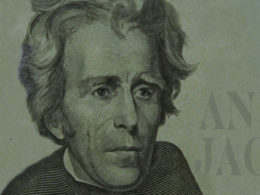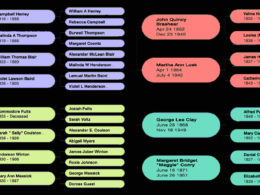Presidential elections in the first 100 years of our democracy were more dramatic and contentious that we ever learned in high school American history. We think modern election controversies are unprecedented, but are they really?
Has a candidate won a presidential election while receiving neither the highest percentage of the popular vote nor the most electoral votes? Has a U.S. presidential candidate ever lost by ten percentage points and still won the election? Have losing candidates established a precedent for how candidates should respond when they believe they lost unfairly or an election was “stolen”? Read on for answers!
1789: One candidate and few voters
The first U.S. presidential election was held in January of 1789, but a citizen-wide election was only held in Pennsylvania and Maryland. And “citizen-wide” only included citizens who were white, male, and land owners.
Each state, as per the new Constitution, could chose electors however they saw fit. State legislatures chose the electors in eight states. (The legislators were chosen by elections, so the Electoral College was chosen by indirect election.) During colonial times, voters were required to be male, white, Protestant, free, over age 21, and own property. Eligible voters were estimated to make up only ten to twenty percent of the population.
New York didn’t participate in the the first presidential election because the New York legislature was so divided between pro-Constitution Federalists and anti-Federalists that they were unable to choose either electors or senators.
North Carolina and Rhode Island had yet to ratify the constitution and were therefore ineligible to choose electors. (Some states were slow to ratify the Constitution, as they feared a federal government would diminish states’ rights.)
The Electoral College convened on February 4, 1789. The candidate with the largest vote total would be elected president, with the runner-up chosen as vice president. Rather than complain about disenfranchisement, the ten voting states unanimously voted for George Washington. The vote was certified on April 6.
John Adams was elected vice president. How was there a runner-up if the vote was unanimous? Each state had as many electors as representatives and senators, and each elector was allowed to cast two votes. All sixty-nine electors voted for Washington. For their second vote, John Adams was the popular choice for vice president.
Washington had been a strong consensus choice for president. The framers of the Constitution created the office with Washington in mind. In a strategy developed by Alexander Hamilton to avoid the complications of Adams tying with Washington, Adams received thirty-four votes, with the rest of the votes split over ten candidates.
Following Washington’s re-election in 1792, presidential elections have occurred every four years. The first two major parties were Federalists and Democratic-Republicans. (George Washington was opposed to the two-party system, assuming that his party, the Federalists, should be the majority view.)
In 1796, Federalist party candidate John Adams was elected president with 71 Electoral College votes, and his “frenemy” Democratic-Republican Thomas Jefferson, with 68 votes, became his vice president. Thirteen different candidates received Electoral College votes, including two brothers, Thomas and Charles Pinckney.
1800: An election decided by the House of Representatives
In 1800, Democratic-Republicans Thomas Jefferson and Aaron Burr ran against Federalists John Adams and Charles Pinckney. This was the first election with political parties; the founding fathers didn’t plan for two parties, and some thought it was a sign of ruin. The campaign was nasty.
Federalist Alexander Hamilton supported his party’s intended vice presidential candidate, Charles Pinckney, rather than John Adams, as Hamilton disliked Adams. Aaron Burr was the intended Democratic-Republican vice presidential candidate, but he schemed for his own elevation to president. The votes were Jefferson – 73, Burr – 73, Adams – 65, Pinckney – 64. Jefferson and Burr were tied.
The vote went to the House of Representatives. Each of sixteen states got one vote, with nine needed to win. They voted eight to six for Jefferson over Burr in the first ballot, and again in the second—and continued to do so thirty-four times (yes, 34 times!), over six days.
Alexander Hamilton disliked Thomas Jefferson as much as he disliked John Adams, but he trusted Jefferson more than he trusted Burr, and therefore lobbied the Federalists on Jefferson’s behalf. Federalists in Maryland and Vermont abstained, causing Jefferson to be elected as president; Aaron Burr became vice president. Although Jefferson and Burr were of the same party, Jefferson also never trusted Burr. (This scene is delightfully portrayed in the brilliant musical, Hamilton. If you haven’t seen Hamilton, stop reading and go see it right now! We’ll wait.)
Thomas Jefferson was elected president. Notably, John Adams lost re-election in the contentious struggle, yet there was a peaceful transfer of power, making the young United States an example to the world.
The Twelfth Amendment: After the Jefferson/Burr struggle, the twelfth amendment to the Constitution was ratified in 1804, with electors voting separately for president and vice president, and presidential candidates running with vice-presidential running mates. No state can vote for two candidates from their own state. (This became an issue when George W. Bush and Richard Cheney ran together in 2000. Cheney changed his voter registration and driver’s license from Texas to his second home in Wyoming so the ticket could get the needed electoral votes from Texas.)
After two victories for Democratic-Republican Jefferson (including re-election in 1804), then two for Democratic-Republican James Madison (1808 and 1812), Democratic-Republican James Monroe won in 1816, and the Federal party folded. James Monroe ran unopposed in 1820.
1824: An election won by a landslide loser
In 1824, in response to the lack of a two-party system, four candidates were on the final ticket, running without party affiliation. Electoral College votes were for John Quincy Adams – 84, Henry Clay – 37, William Crawford – 41, and Andrew Jackson – 99.
Fun fact about John Quincy Adams: He was gifted an alligator by Marquis de Lafayette. He kept it in a White House bathtub for several months until it could be rehoused.
With no electorial college majority, although Jackson was ahead 99-84, the vote went to the House of Representatives for vote, a month later. Clay supported John Quincy Adams, and Adams received exactly the number of votes he needed (13 of 24) and was elected.
Up until 1824, popular vote totals were not recorded. As mentioned above, states could choose their electors however they chose. (The framers of the Constitution were decidedly not populists—they wanted elite electors to choose the most qualified president.)
In 1824, John Quincy Adams received 30.9 percent of the vote, compared to 41.3 percent for Jackson. When the winner of the popular vote lost in the elections of 2000 and 2016, we tended to think of those elections as anomalies. History shows us that it also happened in 1824 with a larger differential, and again in 1876, when Rutherford B. Hayes, with 48 percent of the vote and (eventually) 185 electoral votes beat Samuel Tilden with 51 percent of the popular vote, but eventually one fewer electoral votes.
It happened yet again in 1888 when Benjamin Harrison (grandson of William Henry Harrison) became president (47.8% of popular vote and 233 electoral votes) over incumbent President Grover Cleveland (48.6% and 168). In the next election, the two ran again and Grover Cleveland beat incumbent Harrison. (Cleveland was the only president to date to serve two non-consecutive terms.)
While Jackson was the popular winner with the largest percentage who lost (10% and 45,000 more votes), with the increase in population and voters, the 2016 election was lost by a candidate, Hillary Clinton, with two percent more votes, but a margin of nearly three million more votes over her opponent.
1828: Andrew Jackson elected
Returning to the resentment of the 1824 election: Four years later, Jackson ran again as a Democratic-Republican against incumbent Adams, now a National-Republican. Andrew Jackson won in 1828
This was a nasty campaign, with Jackson accusing Adams of buying gambling equipment (which was actually a chess set and a billiard table) and being an aristocrat who procured a prostitute for the czar what serving as a diplomat in Russia (These reports seem contrary to his known character, but it’s hard to prove a negative.) Jackson was called a bigamist and an adulterer—accurately so, actually, as he and his wife, Rachel, married while she was still married to her first husband. In Rachel’s defense, she erroneously thought her first husband had obtained a divorce decree before she married Jackson. In the gossips’ defense, the couple were actually living together before their illegal marriage, because they knew she was still married to her first husband. They then married when they thought she was divorced. They married again after she actually became legally divorced.
The personal travails can, and perhaps should, be overlooked. Andrew Jackson was justifiably criticized for brutality in the Seminole war. Nonetheless, this charge was somewhat hypocritical as Adams had been Secretary of State at the time and welcomed the opportunity to obtain Florida from Spain.
Jackson was re-elected in 1832, defeating Henry Clay. (Full disclosure: the author is distantly related to Henry Clay, but disliked Andrew Jackson before confirming that connection.)
Fun fact about Andrew Jackson: Jackson, widely known as “Old Hickory,” had a pet parrot named Poll. At Jackson’s funeral, the parrot swore so loudly and for so long that the bird had to be removed from the house.
1836: Three Whig candidates split the vote
After running as a National Republican in 1832, Henry Clay helped found the Whig party. Clay did not run in the 1836 election, probably due to grief over the death of his daughter Ann. Andrew Jackson had made it known that his chosen successor was Martin Van Buren, and the Whigs were eager to defeat Van Buren.
Fun facts about Martin Van Buren:
1) He married his first cousin, Hannah Hoes. She died two decades before his presidency, at age 35; Van Buren remained single. After their son’s marriage to Angelica Singleton, she served as First Lady.
2) Van Buren was given two tiger cubs by the Sultan of Oman. He wanted to keep them in the White House; Congress insisted they be sent to a zoo.
The Whigs ran three candidates against Van Buren—William Henry Harrison, Tennessean Hugh Lawson White,* and Daniel Webster—purposefully splitting the vote. Perhaps the strategy was to send the election to the House of Representatives. That may seem like a long shot, but recall that the president had been chosen by that method in 1800 and again in 1824.
* Like Henry Clay, Hugh Lawson White is a cousin of the author.
Martin Van Buren won. His running mate, Richard Mentor Johnson, did not receive a majority of Electoral College votes for VP; he was elected vice president by the Democratic Senate.
Two odd facts about Vice President Richard Mentor Johnson:
1) Richard Mentor Johnson was the only vice president elected under the extended provisions of the Twelfth Amendment.
2) On a personal note, Johnson was not criticized for taking an enslaved woman as his mistress; he was criticized for treating Julia Chinn as his wife and giving their daughters his name.
Least we overestimate Johnson’s enlightened attitude, after Julia Chinn died, Johnson began a relationship with another woman enslaved by the family. When she left him for another man, he sold her. He then began a relationship with her enslaved sister.
When Johnson died, his daughters by Julia Chinn could not legally inherit his property because his marriage to Julia was not legally sanctioned.
In the campaign of 1840, when Martin Van Buren ran for re-election, William Henry Harrison defeated Henry Clay for the Whig nomination, based largely on his reputation as a war hero in the War of 1812. He ran with John Tyler against Van Buren under the slogan, “Tippecanoe and Tyler too.”
William Henry Harrison won a decisive victory, but had the shortest tenure of any president, dying only a month after inauguration. As a further blow to the Whigs, John Tyler, it turned out, had joined the Whigs only in his abhorrence of Andrew Jackson rather than in principle.
After Tyler was kicked out of the Whig party, Kentuckian Henry Clay ran against Tennessean James Knox Polk in 1844. Clay’s opposition to slavery (albeit as a slaveholder) may have cost him the close election.
The Whig candidate in 1848, slave owner Zachary Taylor, became the last Whig to win the presidency when he defeated Democrat Lewis Cass, as well as Martin Van Buren, running this time for the “Free Soil” anti-slavery party.
The Free Soil party was against expansion of slavery into the west, not for immediate abolition. Van Buren’s father kept six enslaved people. When Martin Van Buren’s only enslaved worker, Tom, escaped, Van Buren made only a feeble attempt to re-enslave him.
Twelve U.S. presidents were slaveholders at some point in their lives. (John Adams and John Quincy Adams were notable as the only two of the first twelve who did not enslave people.)
In his second year in office, President Taylor attended a July 4 celebration at the unfinished Washington Monument, and quickly became ill with acute gastroenteritis. Like the only other elected Whig president, he died in office. He was succeeded by Vice President Millard Fillmore.
In 1852, both parties were split over the issue of slavery. Democratic candidate Franklin Pierce of New Hampshire, known as “Young Hickory of the Granite Hills,” beat “Old Fuss and Feathers” Winfield Scott, the last Whig Party candidate for president.
California Senator John Freemont was the first candidate of the new Republican party to run for president in 1856, and received 33 percent of the vote. Democrat James Buchanan won with 45 percent of the vote, as Millard Fillmore, running as the xenophobic “Know Nothing” third-party candidate garnered 21 percent of the vote.
Calling the Know Nothings xenophobic is actually mild. Besides being anti-immigration, they were anti-Catholic and racist. How could they possibly get 21 percent of the vote? Recall the fact that only white males could vote.
Since 1856, every U.S. presidential election has included a Democratic and a Republican candidate, and, with the exception of 1912, those candidates have been the top two vote getters. (In 1912, former Republican President Theodore Roosevelt ran as a Progressive/Bull Moose candidate, and received more votes that the Republican candidate William Taft, giving the victory to Democrat Woodrow Wilson.)
1860: The election of Abraham Lincoln
Abraham Lincoln became the first candidate running under the Republican ticket to win, albeit with under 40 percent of the popular vote. Delegates at the Democratic convention had been unable to agree on a candidate. When they reconvened, the party selected Stephen Douglas. Then the Southern delegates chose President James Buchanan’s vice president, John Breckenridge, as their candidate.
The Republican party opposed the expansion of slavery into territories, the Democrats supported non-interference from the federal government. A group of former Whigs and Know Nothings chose Tennessean John Bell to run, under the platform “The Constitution as it is and the Union as it is.” No party was running to abolish slavery, the issue was expansion.
In 1860, Abraham Lincoln, and vice presidential candidate Hannibal Hamlin, won by carrying the North. Several Southern states seceded from the Union before Lincoln was even inaugurated.
For his re-election in 1864, Lincoln defeated Democrat George McClellan, who had been commander of the Army of the Potomac before Lincoln removed him. In an effort to bring the country together, Lincoln had chosen Tennessee Democrat Andrew Johnson as his running mate for his second term. Johnson was the only Southern senator who had remained in the U.S. Senate after succession, but was an ardent state’s rights advocate. Lincoln had made him the military governor of Tennessee during the American Civil War, in 1862.
Tragically, just five days after Robert E. Lee’s surrender at Appomattox, and six weeks after Lincoln’s second inauguration, Lincoln was assassinated and Andrew Johnson became president.
1868 and 1872: Ulysses S. Grant
Former Union General Ulysses S. Grant won on the Republican ticket in 1868 and 1872. Two notable details of the 1872 election:
- Victoria Woodhull was the first woman to actively pursue the U.S. presidency, although women weren’t allowed to vote then, or for another half-century. While Grant called slavery “a stain to the Union”,’ Woodhull had the strongest stance on civil rights of the candidates, and asked abolitionist Frederick Douglas to be her running mate. He declined to respond. (Frederick Douglass had been the first African-American presidential candidate in 1848.)
- There were a record number of “faithless electors”—members of the Electoral College who don’t vote for the candidate to whom they are pledged. The electors didn’t vote for Horace Greeley because—well, hard to really blame them for this—because he was dead. Greeley, a newspaper publisher famous for the slogan “Go West Young Man,” died between election day and the Electoral College vote.
1876: The most contentious election in the nation’s 200 years
While this article covers the first 100 years of U.S. presidential elections, the 1876 election, at the end of the first century, could justifiably be called the most contentious in the first or second century of our nation. That’s saying a lot, as Abraham Lincoln’s election led to the American Civil War.
In the largest election turnout to date, Samuel Tilden won the popular vote and 184 of the necessary 185 electoral votes needed for election. Rutherford B. Hayes had 165 electoral votes. Twenty votes remained disputed. Hayes would need every single contested vote to win. He got them with the informal Compromise of 1877: to appease Southern Democrats, Republicans agreed to withdraw federal troops from the South, ending Reconstruction.
Rutherford B. Hayes was elected and served one term. Due to the compromise, federal support of voting rights was withdrawn. Black voters in the South were disenfranchised for decades.
One bright spot in the election of 1876: It holds the record for highest voter turnout in a U.S. presidential election at 82.6 percent. In comparison, the 159,633,396 Americans who voted in 2020 were part of the highest number of presidential voters thus far, and the highest percentage of the voting-eligible population in 120 years at 66.7 percent, but well below the 1876 record.

